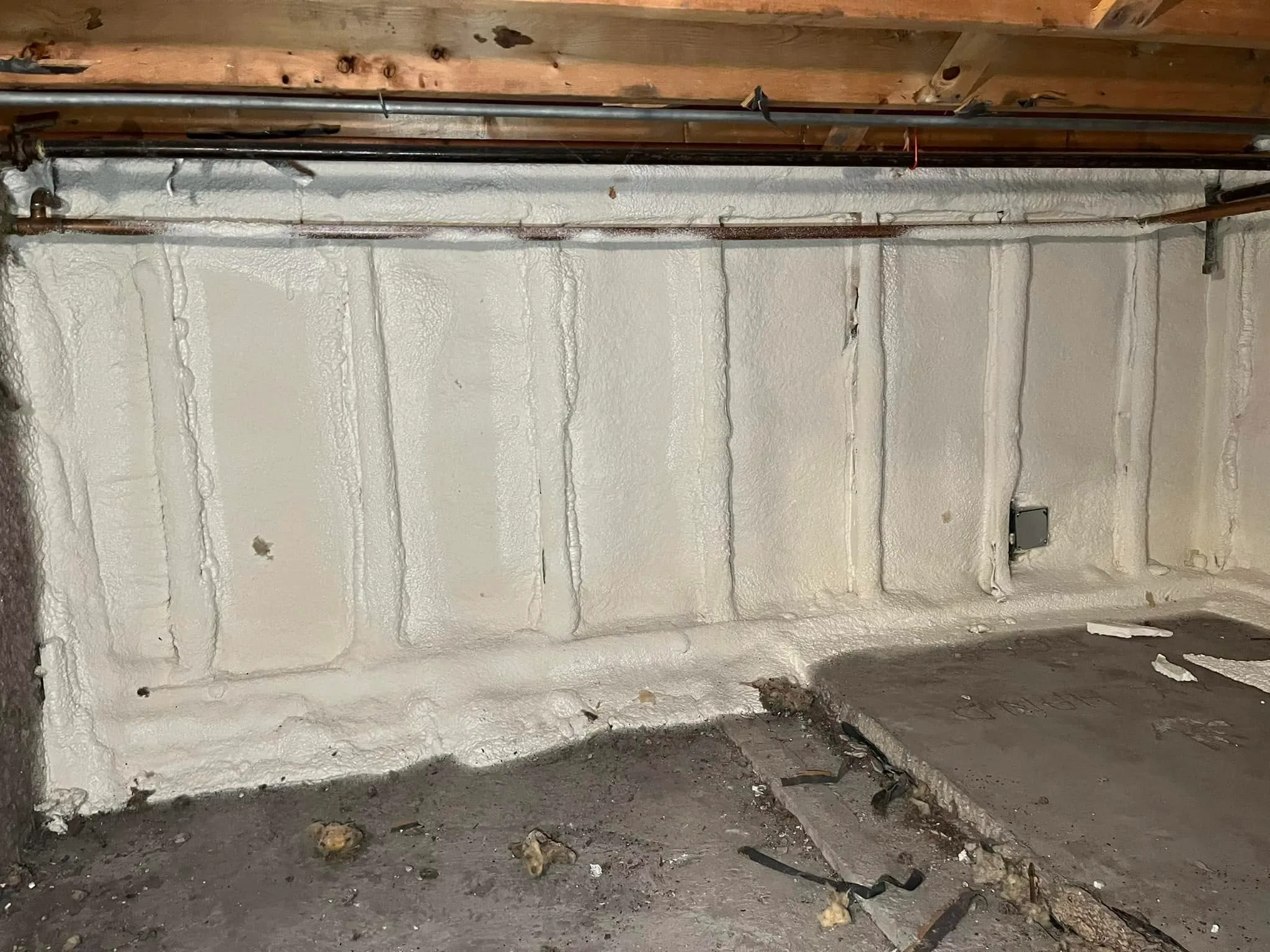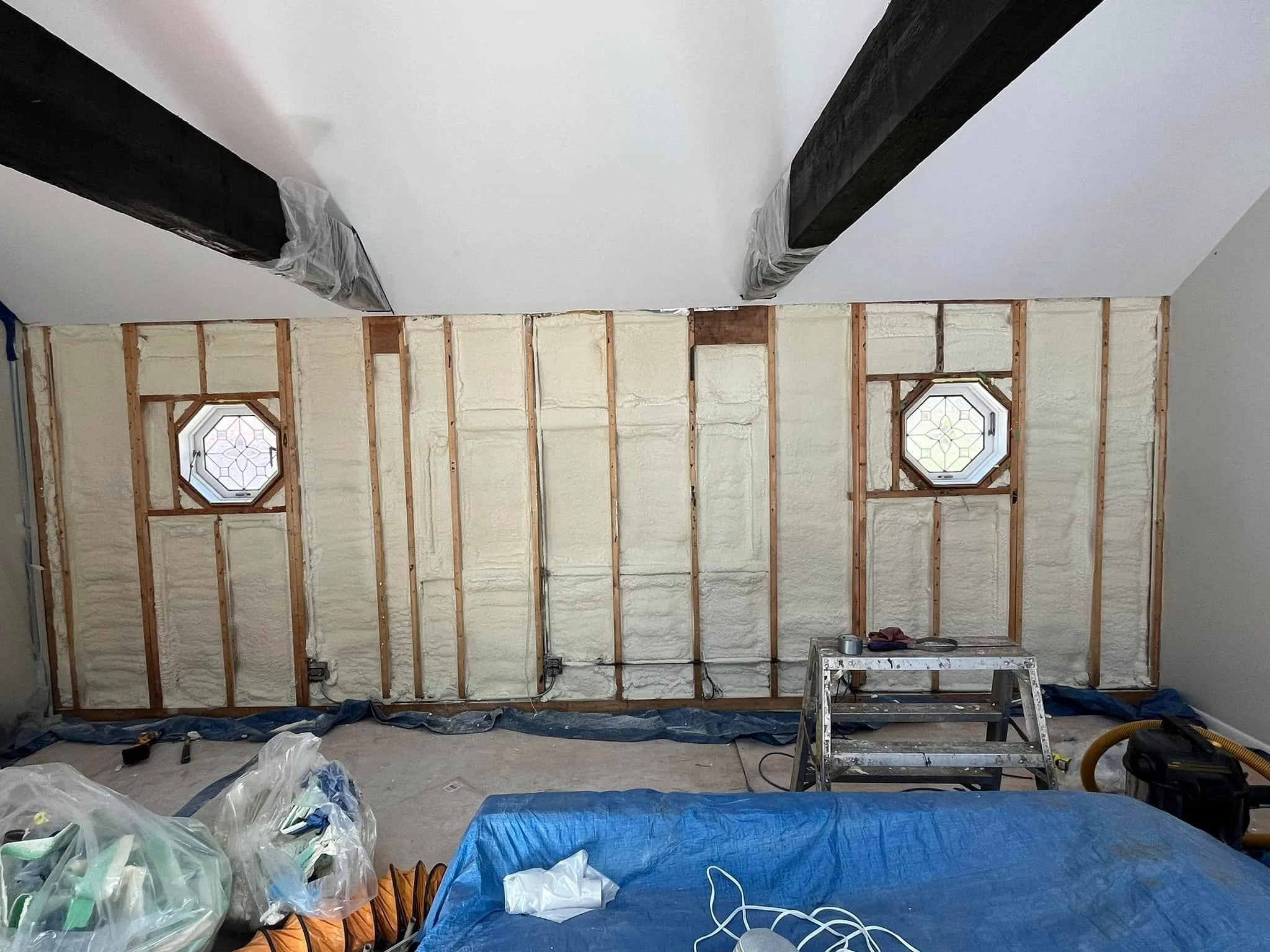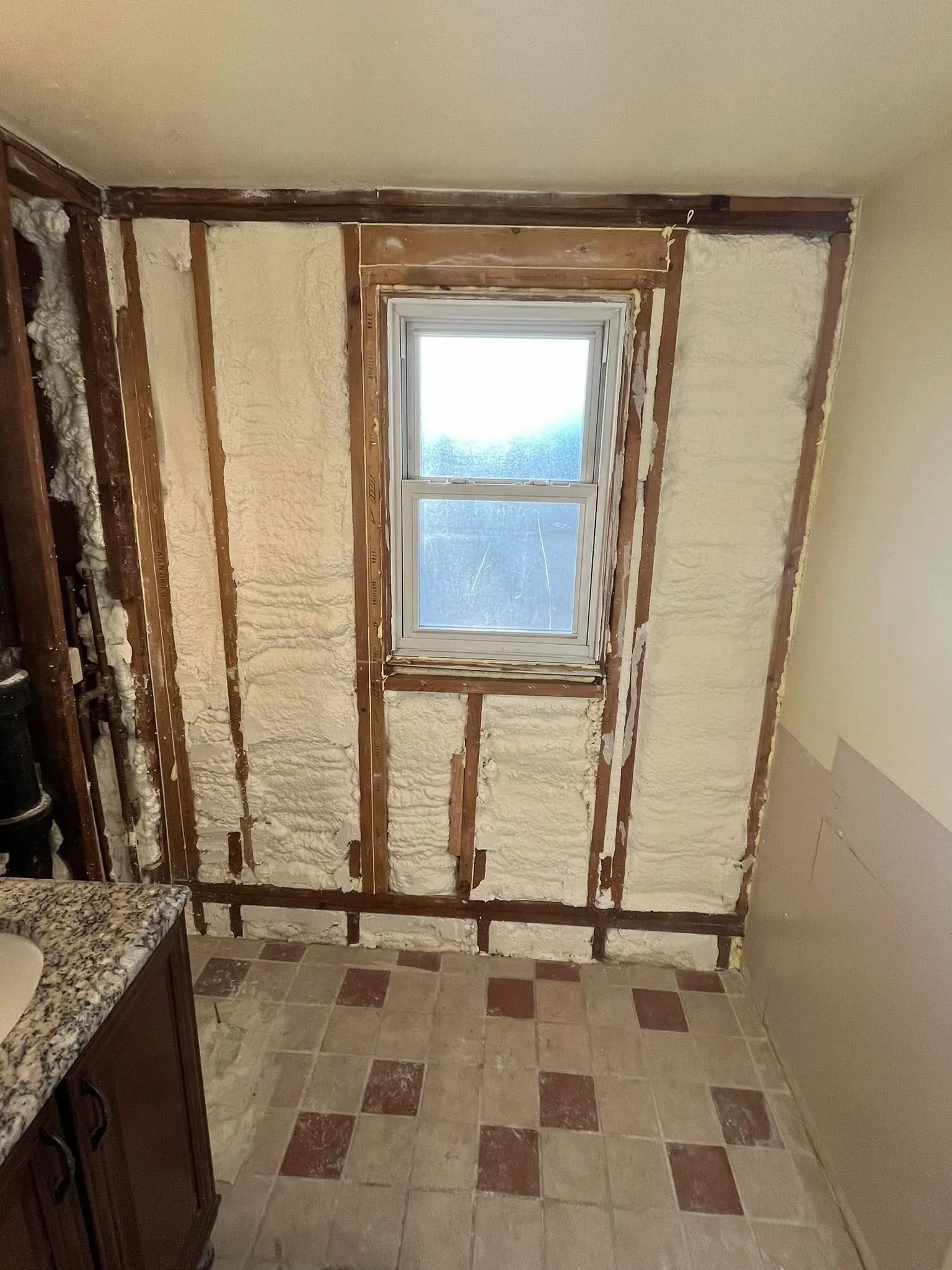
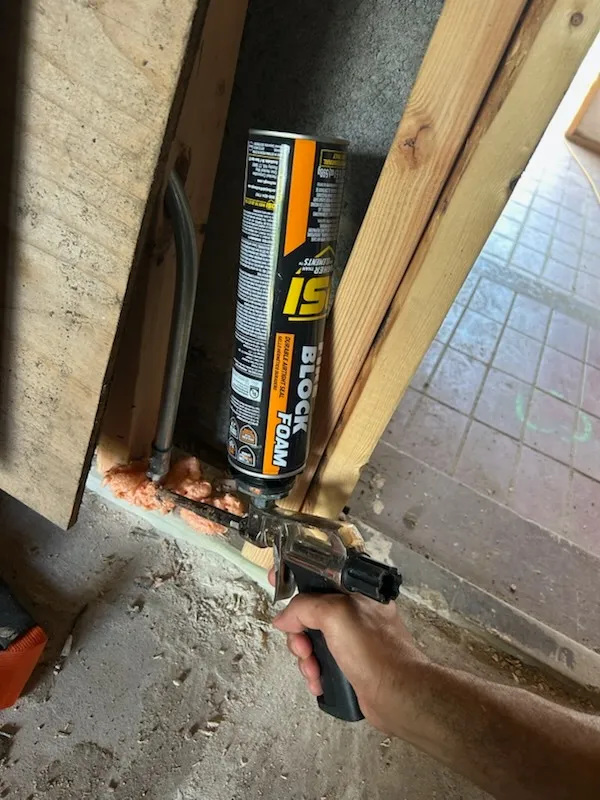
Air leaks plague approximately 90% of buildings in Will County, creating energy inefficiencies that increase utility costs by 15-30% annually. These invisible gaps around windows, doors, electrical outlets, and structural joints allow conditioned air to escape while permitting outside air to infiltrate your building envelope. Identifying and sealing these leaks requires systematic detection methods and professional-grade materials to achieve lasting results.
Will County,IL variable climate conditions—ranging from frigid winters with temperatures dropping below zero to humid summers exceeding 90°F—create significant pressure differentials that exacerbate air leakage issues. South Chicago Insulation has documented consistent air leakage patterns across residential and commercial buildings throughout the region, providing comprehensive solutions based on decades of field experience with local construction methods and weather challenges.
Air leaks manifest through various indicators that building occupants can detect without specialized equipment. Temperature variations between rooms, drafts near windows and doors, and unexplained increases in energy bills signal potential air leakage problems. Dust accumulation around electrical outlets and baseboards indicates air movement through wall cavities, while moisture issues near windows suggest compromised sealing.
Professional air leak detection utilizes blower door tests that pressurize buildings to 50 pascals, revealing leakage rates measured in cubic feet per minute (CFM). Thermal imaging cameras detect temperature differences caused by air movement, while smoke pencils trace airflow patterns around suspected leak locations. These methods provide quantifiable data for prioritizing repair efforts.
Bonus Tip: Conduct preliminary air leak detection during windy days by holding a lit incense stick near potential problem areas. Moving smoke indicates air movement and probable leakage points.
| Detection Method | Accuracy Level | Equipment Required | Professional Needed |
|---|---|---|---|
| Visual Inspection | Low-Medium | None | No |
| Smoke Pencil Test | Medium | Smoke pencil | No |
| Blower Door Test | High | Blower door fan | Yes |
| Thermal Imaging | Very High | Thermal camera | Yes |
| Pressure Testing | High | Manometer | Yes |
Building components experience different air leakage rates based on construction methods prevalent in Will County developments. Older buildings constructed before modern building codes exhibit higher leakage rates, particularly around foundation transitions and attic access points. Newer construction often shows leakage around penetrations for plumbing, electrical, and HVAC systems.
Window and door installations represent primary leakage sources, accounting for 25-35% of total air infiltration in typical buildings. Electrical outlet boxes on exterior walls create pathways for air movement, while recessed lighting fixtures in insulated ceilings allow significant air exchange with unconditioned spaces. Plumbing penetrations through exterior walls and foundation interfaces frequently lack proper sealing.
| Leak Location | Percentage of Total Leakage | Difficulty to Seal | Priority Level |
|---|---|---|---|
| Windows/Doors | 25-35% | Medium | High |
| Electrical Outlets | 15-20% | Low | Medium |
| Plumbing Penetrations | 10-15% | High | High |
| Recessed Lighting | 8-12% | Medium | Medium |
| Foundation Joints | 5-10% | High | High |
Bonus Tip: Check for air leaks during extreme weather events when pressure differentials are greatest. Cold winter days and strong wind conditions make air movement more noticeable through temperature changes and draft sensations.
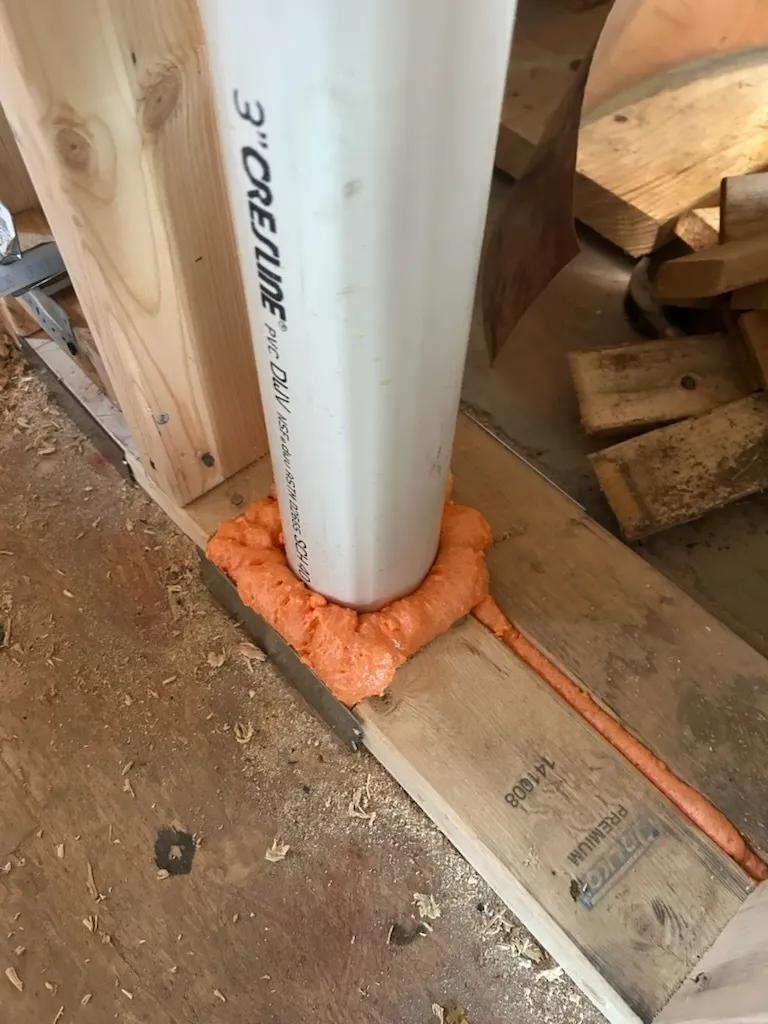
Effective air sealing requires material selection based on gap size, location, and expansion characteristics. Expanding foam sealants work effectively for larger gaps exceeding 1/4 inch, while caulk compounds seal smaller openings around stationary components. Weatherstripping addresses moveable components like doors and windows, requiring regular maintenance and replacement.
Professional-grade air sealing incorporates vapor barriers and air barriers that address different moisture and air movement challenges. Polyethylene sheeting creates effective air barriers when properly installed with sealed joints, while specialized tapes and gaskets provide durable connections between building components. Spray foam insulation simultaneously addresses air sealing and thermal bridging issues.
| Sealing Material | Gap Size Range | Durability | Application Method |
|---|---|---|---|
| Acrylic Caulk | Up to 1/4″ | 5-10 years | Caulk gun |
| Expanding Foam | 1/4″ to 3″ | 15-20 years | Spray application |
| Weatherstripping | Variable | 3-7 years | Adhesive/mechanical |
| Spray Foam | Any size | 20+ years | Professional equipment |
| Specialized Tapes | Up to 1/8″ | 10-15 years | Hand application |
Air leakage directly correlates with energy consumption patterns documented across Will County commercial and residential buildings. Buildings with leakage rates exceeding 7 air changes per hour at 50 pascals (ACH50) experience 40-60% higher heating and cooling costs compared to buildings achieving 3 ACH50 or lower. The Illinois Energy Efficiency Program reports that professional air sealing typically reduces energy consumption by 20-35%.
HVAC systems in leaky buildings operate continuously to maintain comfortable temperatures, leading to premature equipment failure and increased maintenance requirements. Humidity control becomes problematic when outside air infiltrates building envelopes, creating comfort issues and potential mold problems. Proper air sealing allows HVAC systems to operate more efficiently while maintaining consistent indoor environmental conditions.
Building performance assessments identify air leakage sources through comprehensive testing protocols that quantify problems before recommending solutions. Thermal envelope evaluations use infrared imaging combined with pressure testing to locate and prioritize air sealing opportunities. Duct sealing addresses air leakage in distribution systems that can account for 20-30% of total energy losses.
Bonus Tip: Schedule air sealing work during moderate weather conditions when materials cure properly and installers can work efficiently. Extreme temperatures affect material performance and installation quality.
Professional air sealing services address comprehensive building envelope improvements through systematic approaches that deliver measurable results. These specialized services include:
Building ventilation requirements must be evaluated before comprehensive air sealing to ensure adequate fresh air exchange. Overly tight buildings without proper mechanical ventilation can develop indoor air quality problems and moisture accumulation issues. Professional assessment determines appropriate air exchange rates for specific building types and occupancy patterns.
Combustion appliance safety requires special attention during air sealing projects, as reduced air infiltration can affect appliance draft and create carbon monoxide hazards. Gas water heaters, furnaces, and fireplaces need adequate combustion air supplies that may require dedicated ventilation systems after air sealing improvements. Professional evaluation ensures safe operation of all combustion equipment.
Budget considerations should account for both immediate air sealing costs and long-term energy savings to determine project feasibility. Return on investment typically occurs within 3-7 years through reduced energy bills, while improved comfort and equipment longevity provide additional benefits. Prioritizing high-impact air sealing locations maximizes initial investment returns.
Visual inspection combined with simple tools like incense sticks or tissue paper can identify obvious air leaks, though professional testing provides comprehensive quantification and prioritization.
Optimal detection occurs during extreme weather conditions when temperature and pressure differentials are greatest, typically during winter months or windy conditions.
Comprehensive blower door testing and thermal imaging typically requires 2-4 hours depending on building size and complexity.
Air leak detection and sealing represent critical building performance improvements that deliver immediate comfort benefits and long-term energy savings. Systematic evaluation identifies priority areas while professional sealing ensures lasting solutions that withstand Will County’s challenging climate conditions.
Contact South Chicago Insulation at [email protected] or (779) 803-8025 to schedule comprehensive air leak assessment and professional sealing services. Their experienced team provides detailed evaluations and customized solutions that address specific building challenges while maximizing energy efficiency improvements.
Modern building standards target 3-5 air changes per hour at 50 pascals pressure (ACH50) for residential buildings. Older buildings often exceed 10 ACH50, while high-performance construction achieves 1-2 ACH50 with proper mechanical ventilation systems.
Building settling, temperature cycling, and material aging create gaps that expand existing air leak pathways. Caulk and weatherstripping deteriorate through UV exposure and thermal expansion, while structural movement opens new gaps around penetrations and joints.
Air sealing reduces uncontrolled air infiltration but cannot eliminate the need for intentional ventilation. Buildings require controlled fresh air exchange for indoor air quality, with mechanical ventilation systems providing consistent air exchange rates regardless of weather conditions.
Focus on accessible locations with high leakage rates first, including weatherstripping replacement, outlet gaskets, and visible caulk repairs. Professional assessment identifies high-impact improvements that provide maximum energy savings per dollar invested.
Weatherstripping requires annual inspection and replacement every 3-7 years depending on usage and material quality. Caulk joints need inspection every 5-10 years with touch-up applications as needed. Spray foam installations typically require no maintenance for 20+ years.

